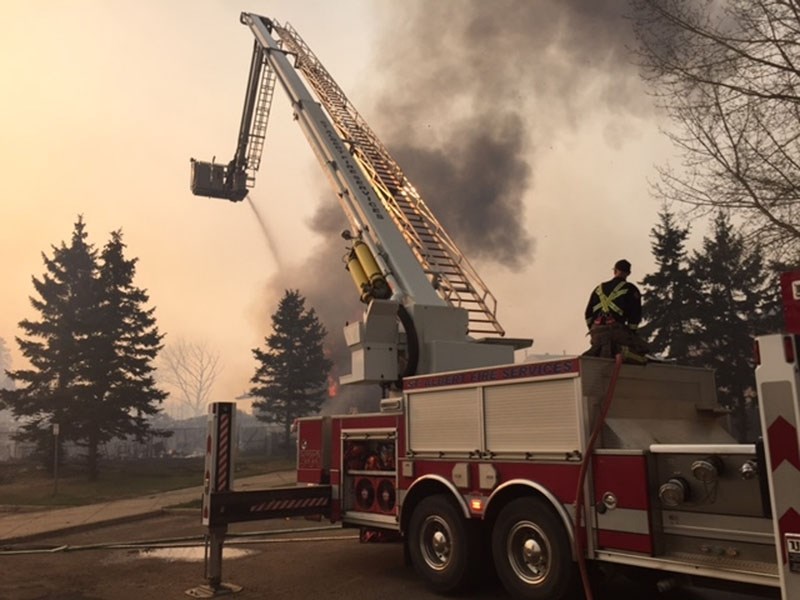The fire may have moved on, but the cleanup of Fort McMurray has just begun, say local firefighters.
Captain Charles Tye was part of a 12-member crew that spent much of last week fighting the wildfires in the Wood Buffalo region. A 32-year veteran with the St. Albert fire department, he also worked to extinguish the 2011 Slave Lake fire.
“It’s considerably larger than Slave Lake,” he said of this year’s fire – it was about 241,000 hectares as of Thursday (or about 3.5 times the size of Edmonton), the province reported – but it’s also mostly moved past Fort McMurray at this point.
Tye said he and his co-workers went up in vans on May 6 to relieve another St. Albert crew sent up earlier this month. They spent most of their time working in the mostly destroyed Abasand and Beacon Hill regions along with crews from Edmonton, Red Deer, and Strathcona County.
Tye said the firefighters in Fort McMurray were being co-ordinated out of the MacDonald Island Park recreation centre’s parking lot, which was home to over 100 pieces of firefighting equipment. Operators split the city into a north and south sector and dispatched crews whenever their roving patrols spotted fires.
Tye said there was still fire on both sides of the highway when he and his crew arrived. About 95 per cent of the structures he saw were reduced to burnt-out basements, although a school and a few homes were still intact.
“There was a cloud of smoke right to ground level” at night, he said.
“Your eyes were just constantly watering.”
Most of his time up north was spent hosing down hot spots and digging through debris with a McLeod rake (a hoe with teeth). They also pre-emptively soaked stretches of vegetation to prevent future fires.
“We worked around the clock,” he said, with only a few hours each day to sleep and eat.
“We pretty much were constantly working for three days.”
Tye said the crew did respond to one structure fire on May 7 involving two homes and a garage. Reinforcing them were fire engines, ladder trucks, tankers and a helicopter.
“We didn’t call the helicopter. They just kind of showed up and started dumping water on us!”
St. Albert crews have now moved on to battle hotspots around Anzac, a community southeast of Fort McMurray, said fire chief Ray Richards. At this point, Fort McMurray crews will start transitioning from firefighting to cleanup.
“The first thing they’ll have to do is re-establish utilities,” he said.
“There’s no sense in having people moving back if the grocery stores aren’t open.”
Crews will have to go house-to-house and audit each for hazardous substances, explosive gas tanks, leaking water and gas lines, and salvageable items, Richards said. With some 2,000 structures destroyed by the fire, this will be a lot of work.
“There’s always hazardous materials in just about everything that burns,” he noted, so crews will have to wear full protective gear as they work. Crews will also have to contend with further fires sparked by electrical shorts and smouldering debris.
After insurance agents examine each site, crews will have to clear away all the debris, which will likely take up considerable space in local landfills, Richards said.
Crews will have to restore gas, water, and electrical services to buildings so that stores and governments can re-open, Richards said. They’ll also have to inspect bridges, fix roads, and replace streetlights.
This can mean a long, frustrating wait for residents, but it’s important that all safety steps are taken, Richards said. The province has said it will have an official timeline for when people can return home in a couple of weeks.
Tye said he and his crew took a day off and were back on the job by Wednesday. He was tentatively scheduled to head back north to Fort McMurray today.
“We’re there for as long as you need us,” he said to Fort McMurray residents.




